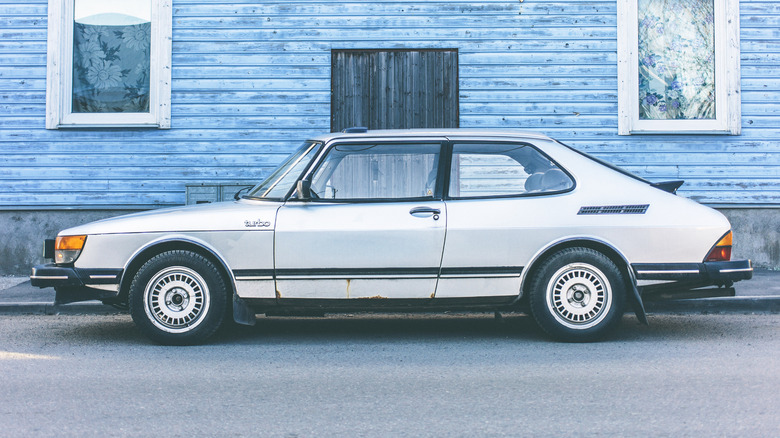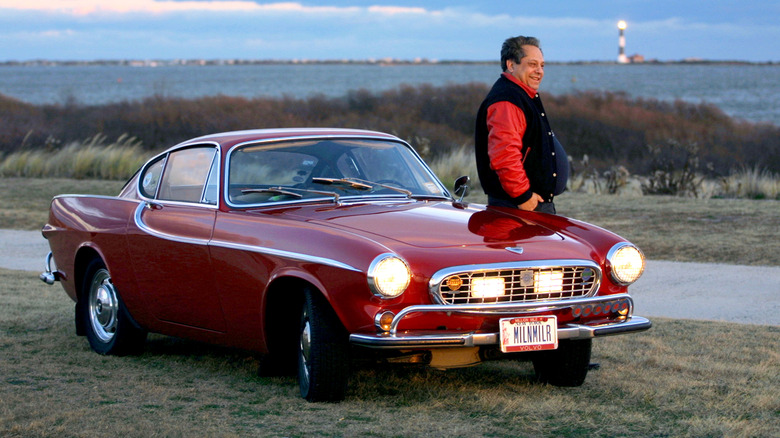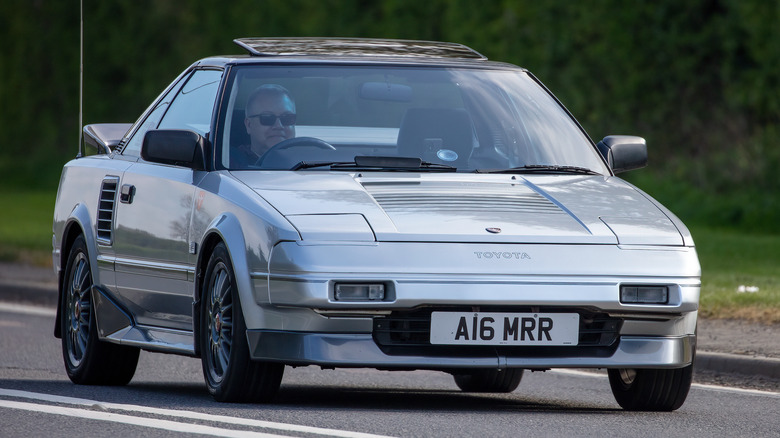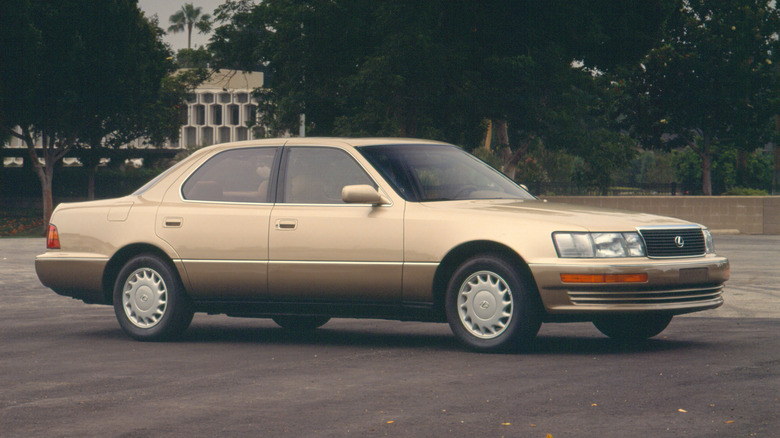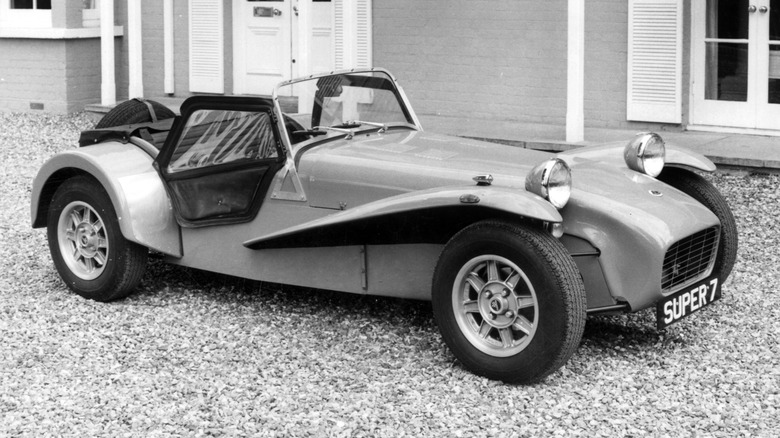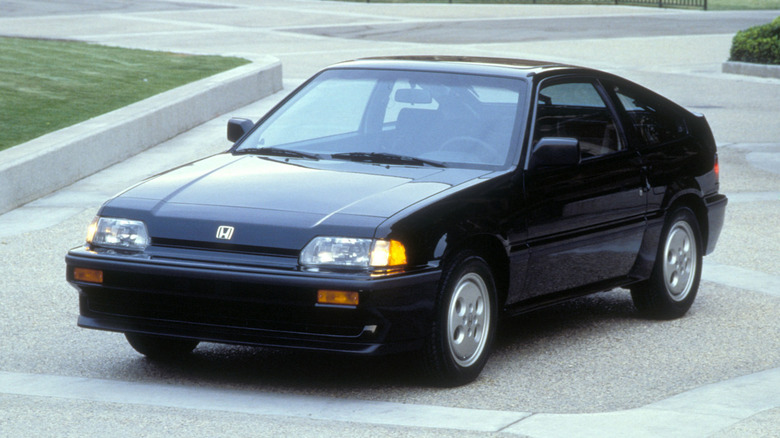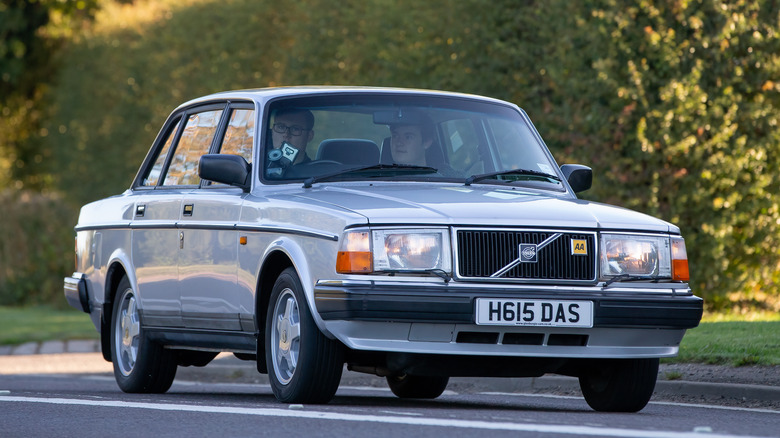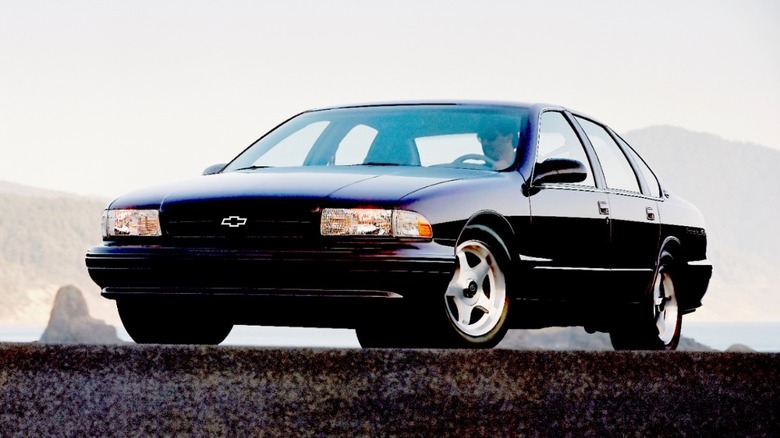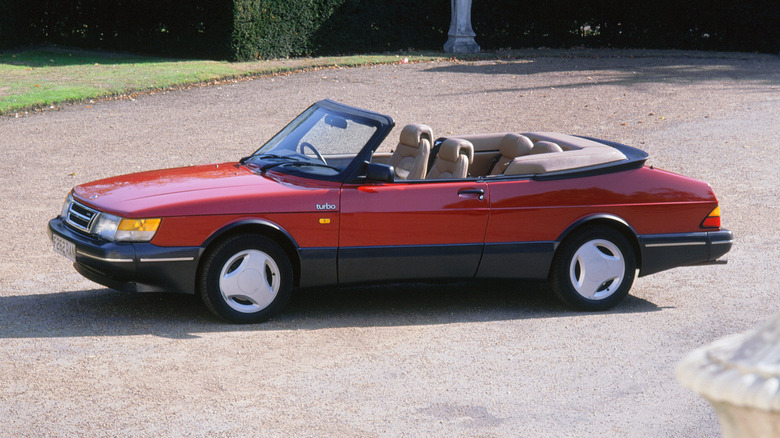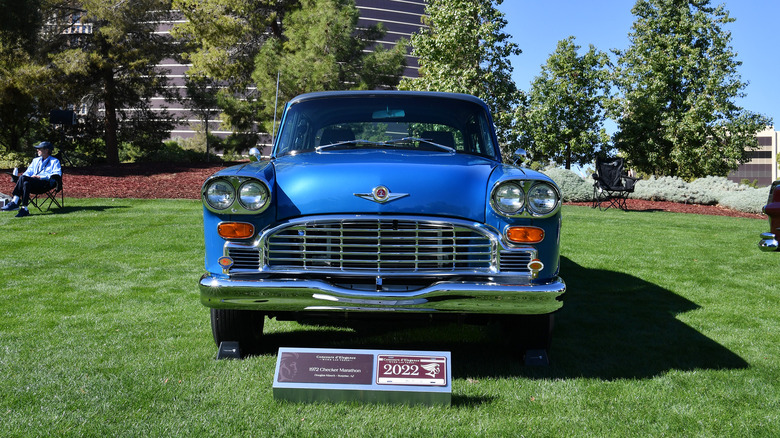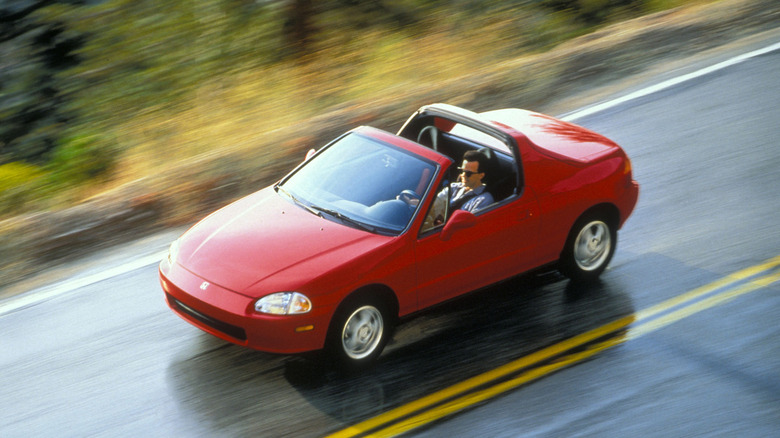10 Low Maintenance Classic Cars That Deserve More Attention
It's easy to wax lyrical about the charms of owning a classic car, but the reality can sometimes be less than ideal. Older cars are inevitably less reliable than newer counterparts, with worn components that are more prone to breaking and fewer parts availability when things go wrong. That's not to mention the potential damage done by previous careless owners, some of which can only be spotted after it's too late and you're already stuck at the side of the road waiting on a tow truck.
It's impossible to ensure that any classic car will be fully reliable, but some models stand out above the rest to minimize the amount of maintenance and repairs any owner will have to carry out. Many of those dependable classics are very well known, but a few tend to slip under the radar of many enthusiasts. Each classic car listed here should be dependable if it's been looked after correctly and shouldn't break the bank if something does need replacing.
Volvo P1800
Volvo as a brand is renowned for its safety and reliability, with perhaps no car better summing up the latter than the P1800. At the hands of Irv Gordon, a P1800 made history by becoming the highest confirmed mileage vehicle ever recorded, with over 3.2 million miles on the clock by the time Gordon passed away in 2017. Remarkably, Gordon's car only received a handful of major repairs throughout its lifetime, with two engine rebuilds and some body repairs after a car transporter damaged his vehicle in transit.
Most P1800s on the classic car market will have racked up only a tiny fraction of that mileage, but as long as they're in good condition, they should be just as reliable. Like any car of its age, the two key things to be wary of are signs of internal rust and missing service records — both indicators that it's not been looked after as carefully as it could have been. That said, few cars of its age offer such an impressive combination of daily drivability, reliability, and head-turning style.
Toyota MR2
JDM icons like the MkIV Toyota Supra are famous for being over-engineered, but many of the brand's lesser-appreciated models were also built to be more durable than was necessary. The first-generation Toyota MR2 is a great example, with very few reliability gremlins and a reputation for being tough despite its compact size. It's a rarity, being one of very few mass-produced mid-engined cars.
The MR2 wasn't just successful on the grounds of it being unique, however. The mid-engine layout meant it was very responsive and its performance was impressive given its relatively unremarkable power output. The car's interior is also slightly more spacious than other JDM classics like the Mk1 Miata, although taller and larger drivers might still find it a tight fit for longer journeys.
Alongside evidence of regular maintenance, the biggest killer of most early MR2s is rust. The car's mechanicals are low maintenance and reliable, but even the best classic sports cars won't be as straightforward to keep running if there's too much of the orange stuff.
Lexus LS400
The phrases "low maintenance" and "luxury cars" don't usually go together, but a rare exception is the Lexus LS400. It features what's arguably the most reliable Toyota engine ever made, a V8 capable of racking up hundreds of thousands of miles on the road without needing major repairs. This didn't happen by chance: Toyota reportedly tested 973 different prototypes before settling on the engine's final design. As a result, it was as smooth as anything the Germans could offer at the time while still retaining its famed Japanese reliability.
It wasn't just the engine that was over-engineered either — every aspect of the car was designed from the ground up to not only outshine its German competitors when new but outlast them all, too. It makes an excellent classic daily driver and should remain largely hassle-free to own even at higher mileages and when in less pristine condition. Matt Farah's famous million-mile LS400 is proof that even the shabbiest-looking examples should still have plenty of life left in them if given the correct care and attention.
Caterham Seven
While it's just about the least practical car on the road, a Caterham Seven is also one of the most unique to drive. Being a kit car, it's easy to disassemble and replace components by design. However, its simple construction means that major repair work won't be a regular occurrence. Few other sports cars are so simple to keep running.
The Caterham Seven has been in production since the '70s, and before that, it was sold under the Lotus brand for another two decades prior. The basic design has remained unchanged since then, but over the years, several more modern powertrain components have been added. These vary by age — for example, some cars use Ford engines, while others use Suzuki or Rover engines — but none are known to be particularly troublesome.
The car is designed to be worked on at home by someone with the relevant level of technical skills, and depending on an owner's location, the nearest specialist may be many hours' drive away. So, the Seven is best suited to someone willing to do service and repair work when things go wrong, but also unwilling to brave the unreliability woes that are a feature of so many other British cars. The Seven is unlike most classics, in many ways — not least because, when looked after correctly, it should be a reliable weekend toy.
Honda CRX
The Honda CRX was launched as the enthusiast-oriented offering in the Civic lineup, combining sportier handling with a choice of frugal engines. It had already been on the market before the launch of the CRX Si caught the attention of American buyers, with the Si in a segment of its own in the U.S. market. The first generation car ran from 1984-1987, while the second generation was introduced in 1988 and survived until dwindling sales saw it axed in 1991. Both generations offer the same backroad thrills on a budget, but prices for more desirable variants like the Si can be considerably steeper.
The CRX has a reputation for being well-built, with most of its weak spots fairly straightforward to remedy. As always, the most low-maintenance examples will be those that have been well cared for, especially in regards to the engine, as certain replacement engine components are now not as easy to find as they once were. The CRX's plastic body panels are also a potential weak spot, and can easily crack. Unwanted modifications can also leave the car less reliable. For a car of its age, however, the CRX is still generally hassle-free to own and is becoming an increasingly valuable collectible.
Volvo 240
A boxy Swedish classic that isn't to everyone's tastes, the Volvo 240 has a hard-earned reputation for being tough. There are still plenty of examples around the used market, making finding one in clean condition a less arduous task than for rarer classics. Plus, when things do go wrong, repairing them is usually a straightforward task. Like any car of its age, rust is one of the most common issues with old 240s, and even an otherwise reliable example can be crippled by too much of it. Wiring is also cited by owners as a common failure point, although many older, cleaner examples of the car will have had historic wiring issues corrected by now.
The 240 was designed to withstand the harsh conditions of the Swedish winter, and was designed from the outset to be a high-mileage car — the six-figure odometer wasn't just for show. With the correct maintenance, old Volvo engines tend to be bulletproof, and should require little more than regular servicing to keep them running even after several decades of hard use. The car's reputation has meant that some owners skimp on maintenance in the belief that their cars are indestructible, so not every example on the used market today will be quite as reliable as the average collector car. However, even more pristine examples remain reasonably priced, keeping them within reach of most enthusiasts.
Chevrolet Impala SS
Originally conceived as a way to inject some life into the sales figures of GM's B-Body platform, the Impala SS has now aged into modern classic status but remains both affordable and easy to find used. Under the hood sits an LT1 V8 engine which also appeared in various other GM models of the era. This makes parts relatively painless to find if something does break, but it shouldn't — owners report racking up several hundred thousand miles with no repairs needed.
However, the Opti-spark distributor is a known weak spot. Like any older car, rust can be a costly issue too, although this will vary significantly depending on where the car has lived most of its life. Since many surviving higher mileage examples of the Impala SS will have led a rough life, lower mileage examples are preferable for keeping maintenance and repair costs to a minimum. That said, even jankier examples can be fixed up into reliable runners without breaking the bank — assuming you've got the skills to do the tinkering yourself.
Saab 900
Although the quirky Swedish manufacturer has been dead for more than a decade now, Saab's aeronautical-influenced cars retain a strong fanbase. The 900 is one of the most popular enthusiast models, with a long production run and a reputation for reliability. The car's quirky design remains head-turning even after more than 40 years, with both hardtops and convertibles sold over the car's lifespan. Much like the Volvo 240, the Saab 900 was well known for being durable over its time on sale, and that has meant that not every owner will have been as careful with maintenance as a collector would be.
Its weak spots are well known and generally fixable without too much trouble — the headliners can sag, later turbo models have issues with the Automatic Boost Control system, and the manual transmission might not last as long as the engine does. However, as an unusual classic that still commands plenty of attention on the road, a clean Saab 900 is about as hassle-free as you'll get.
Checker Marathon
Checker is mostly known as a taxi manufacturer, with its cabs a common sight across U.S. cities across the latter half of the 20th century. However, it also sold cars to individual buyers under the Marathon nameplate. These cars were, just like their commercial counterparts, built to be simple, tough, and reliable at the expense of all else. They were primitive for their era and never sold in large numbers, but over 60 years since they were first introduced, the remaining Marathons on the road offer a unique old-school charm. Plus, they're no less tough than when they left the factory.
Parts are not so easy to find when things do go wrong, but find a clean example and it's unlikely that much will need repairing. Plus, Checkers share parts with certain other cars of the same vintage, and some parts are designed to be interchangeable, like the front and rear bumpers. Earlier cars are reportedly the toughest, with '70s cars declining slightly in quality, but the simple nature of the Marathon means that there isn't a huge amount that can go wrong assuming the car has been properly maintained.
Honda Del Sol
The successor to the CRX was slightly overshadowed by the success of the Mazda Miata and wasn't embraced by purists quite as much as its predecessor. Nonetheless, there's a lot to like about the Del Sol, not least its reasonable running costs. Much like the CRX, it was launched as the sporty offering in the Civic range, although it shared more parts with a standard Civic than the earlier car. That makes said parts easier to source today, although there are a few parts that are specific to the Del Sol, most of which are trickier to find.
The Del Sol was a gentler sports car than the Miata, but that makes it a more forgiving and practical daily driver. Most surviving examples will have spent many years as daily drivers under previous owners, so ensuring that those owners gave it the required maintenance is the key to getting a hassle-free example. Find a clean one, however, and the Del Sol should prove many thousands of miles of low-maintenance driving.
